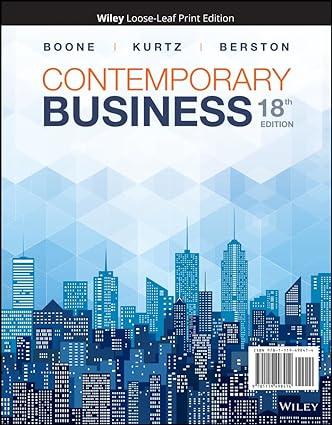When most people think of sesame seeds, what might come to mind are those commonly found sprinkled
Question:
When most people think of sesame seeds, what might come to mind are those commonly found sprinkled atop a burger bun or bagel.
However, the founders of Seed + Mill had something a little different in mind. A business partnership of three women—a serial entrepreneur, a former corporate lawyer, and a Stanford MBA—Seed + Mill is an artisanal sesame stall in one of New York City's “foodiehavens,”
Chelsea Market, which draws over six million people annually.
If you've never heard of tahini or halvah, popular Middle East food staples, Seed + Mill has capitalized on both. Milled on site, tahini is a sesame butter spread made from the natural oil of sesame seeds. The result is a delicious and beautifully rich and creamy product, considered a nut butter in much the same way as peanut or almond butter. The tahini, along with sugar and fruits and nuts for flavor, is used to make 30 different flavors of halvah cakes that are similar to soft, sesame candy. The texture and taste of halvah can be likened to the flakiness and sweetness found inside a Butterfinger candy bar.
Seed + Mill's halvah is imported from Israel and made by small producers to the specifications of the owners (often, it includes butter to make it light and melting).
The story of Seed + Mill exemplifies the entrepreneurial spirit of individuals who began with a vision—an overall idea for how to make their business a success—and then pursued it passionately. While on vacation in Israel, the inspiration for Seed + Mill struck when Lisa Mendelson saw a group of Americans sampling halvah at an outdoor marketplace. This immediately brought back memories from her childhood—growing up and eating halvah and tahini. Mendelson's vision was to take an ancient Middle East food product and modernize it in the United States.
Fast forward a few years and add business partners, Rachel Simmons and Monica Molenaar, and Seed + Mill has become a reality.
Mendelson identified a business opportunity and then allocated available resources (sesame seeds, business partners, suppliers, machinery, information, equipment, and a location) to tap the U.S. market. In addition, with e-commerce and the ability to connect with customers outside the realm of their stall at Chelsea Market, customers from remote parts of the country are accessible via social media, the company website, Instagram, and Facebook.
The characteristics of entrepreneurs described in this chapter are seen in Lisa, Rachel, and Monica. With a vision of building Seed + Mill into a top tahini and halvah brand, the partners, each with her own unique background and experience, bring to the endeavor optimism, creativity, and self-confidence—along with a passion for artisanal food products and their health benefits.
Inspired to create unique, healthy, and delicious artisanal food products, Seed + Mill's partners are determined to see tahini land a spot as a staple in kitchens all over the country—and worldwide.
However, this endeavor will require educating customers about the versatility and health and nutrition benefits of tahini—what some have even refer to as a superfood. “It's such a great, multipurpose ingredient that no one is using the way that they can,” Rachel exclaimed. “I want to see tahini on every table at home,” she says with passion.
Questions for Critical Thinking
1. Tahini and halvah were long considered peasant food—good enough for those who could not afford sweets containing expensive ingredients like butter, white flour, and sugar. Today, chefs are embracing ancient flavors and devising new treats, such as multilayered halvah, sesame ice creams, and pâte brisée made with tahini instead of butter. Based upon this trend, what role will Seed + Mill play? What are its growth prospects, and where do you see the company in the next five years?
2. If you were to start a food product business, how would you determine whether there would be a need in the market? How did the partners of Seed + Mill determine whether their products would fill a need in the market?
3. What were some of the considerations of the partners when choosing an idea for their new business? What would be some of your own considerations when choosing an idea for a new businesss?
4. Based on the following, describe current demographic trends (and additional ones you can think of) that present opportunities for Seed + Mill:
a. Aging of the U.S. population
b. Health benefits of tahini (and halvah)
c. America is more racially and ethnically diverse than in the past
d. Two-income families
e. Food and artisan trends
f. New goods and services
g. Additional demographic trends
Step by Step Answer:

Contemporary Business
ISBN: 9781119498414
18th Edition
Authors: Louis E. Boone, David L. Kurtz, Susan Berston





